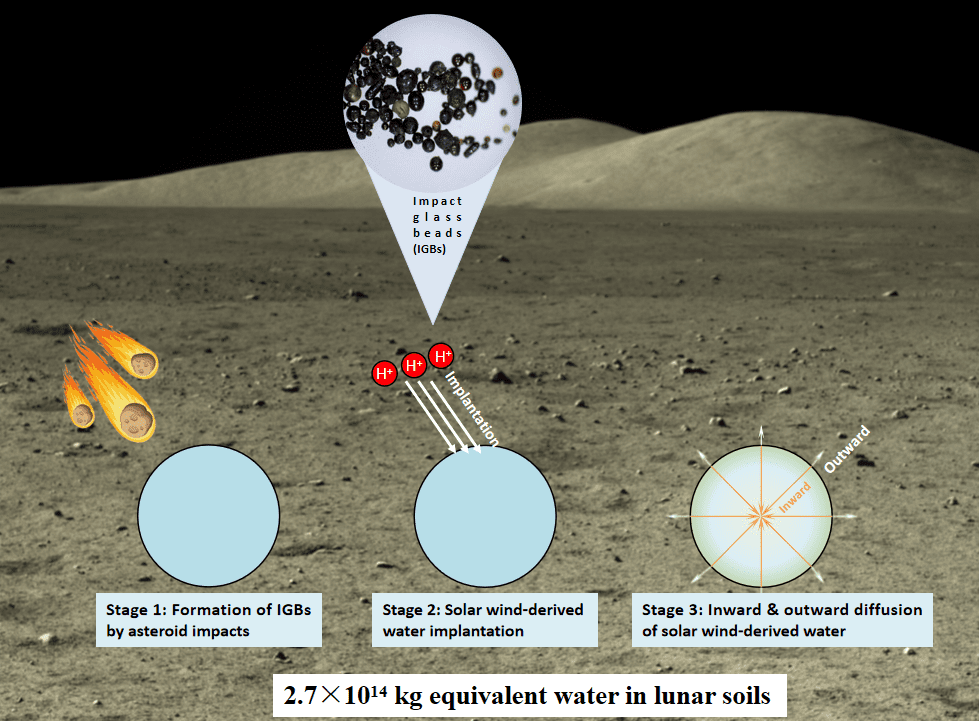We know there is water on the Moon. Several missions in the last few decades have shown that our natural satellite is not as dry as previously thought. Apart from the region in eternal shadow, water evaporates from the soil during the long lunar day. This suggests that something in the soil holds enough water to keep this cycle going. And now, researchers are confident they know what it is: glass.
Not just any glass, glass formed by the impacts of meteorites. This idea has been floating about for a while, but strong supporting evidence has come from the Chang’e 5 mission. The Chinese mission was the country’s first lunar sample-return mission and it brought back to Earth about 1.7 kilograms (3.7 pounds) of lunar material, including some collected from 1 meter (3 feet) deep in the soil.
Analysis of these samples has unveiled how rich in water the glass beads are. These little structures are found everywhere in the lunar regolith (the soil of the Moon) and they act like sponges absorbing water. The research estimates that the impact glass is made up of 0.2 percent water.
“These findings indicate that the impact glasses on the surface of the Moon and other airless bodies in the solar system are capable of storing solar wind-derived water and releasing it into space,” senior author Professor Hu Sen, from the Chinese Academy of Sciences, said in a statement.
The work was led by graduate researcher He Huicun and it suggests that impact glass beads could harbor between 300 billion and 270 trillion kilograms (660 billion to 590 trillion pounds) of water. The upper limit is equivalent to about half the mass of the water in Lake Erie in North America.
Analysis of the water in this sample points to its origin in the solar wind. This stream of particles from the Sun hits the lunar surface when the Moon is exposed to our star. The solar wind is mostly made of protons, which are just hydrogen atoms without electrons. As they hit the lunar regolith, they can interact with the material forming water, which can stay trapped in the soil thanks to these glass beads.

This is how the water cycle of the Moon might work. Image credit: Prof. Hu Sen’s group
Based on the distribution of water within the beads, the team believes that water can accumulate in this glass in just a matter of years. This is thanks to a process called diffusion. And, the water can be equally rapidly released, another essential factor suggesting that these glass beads could be crucial players in the lunar water cycle.
Water trapped in glass beads could be useful during future exploration as it is easy to extract. And it might not be a lunar exclusive. Other airless bodies in the solar system might also have such glass beads, rich in water.
The study is published in Nature Geoscience.
Source Link: New Water Reservoir On The Moon Discovered In Beads Of Impact Glass